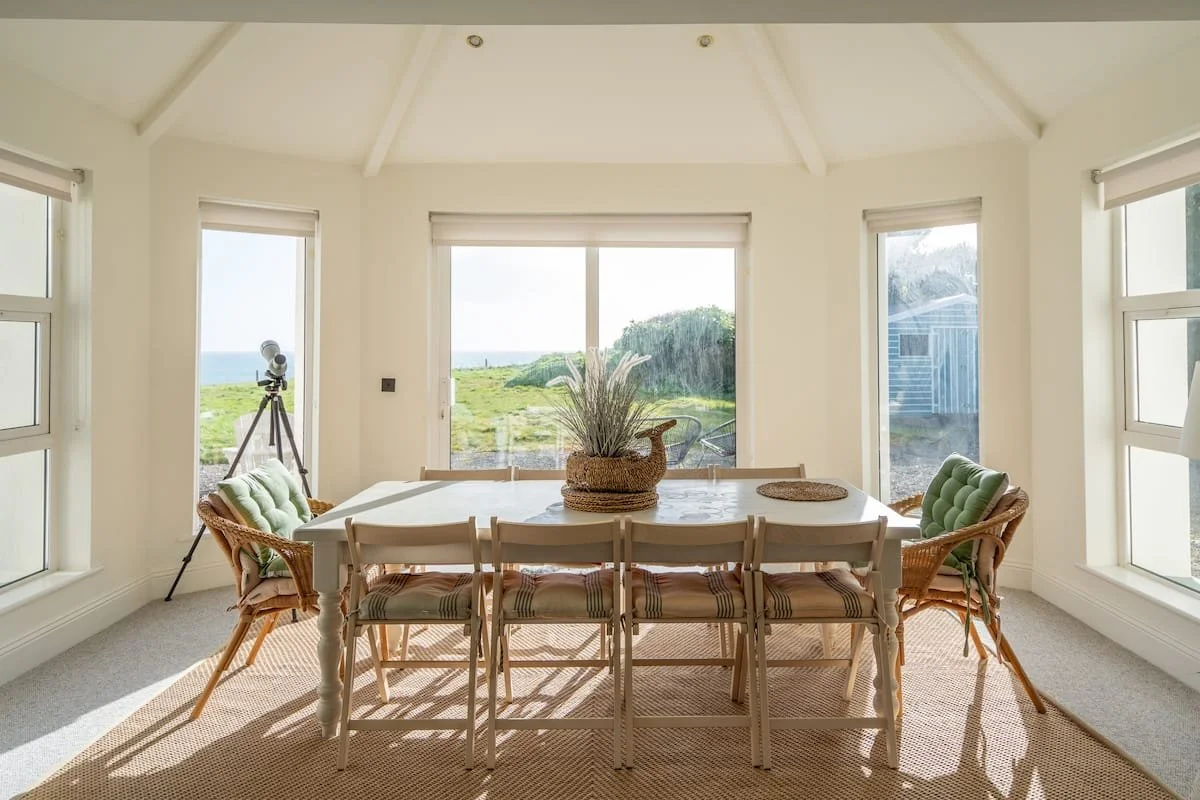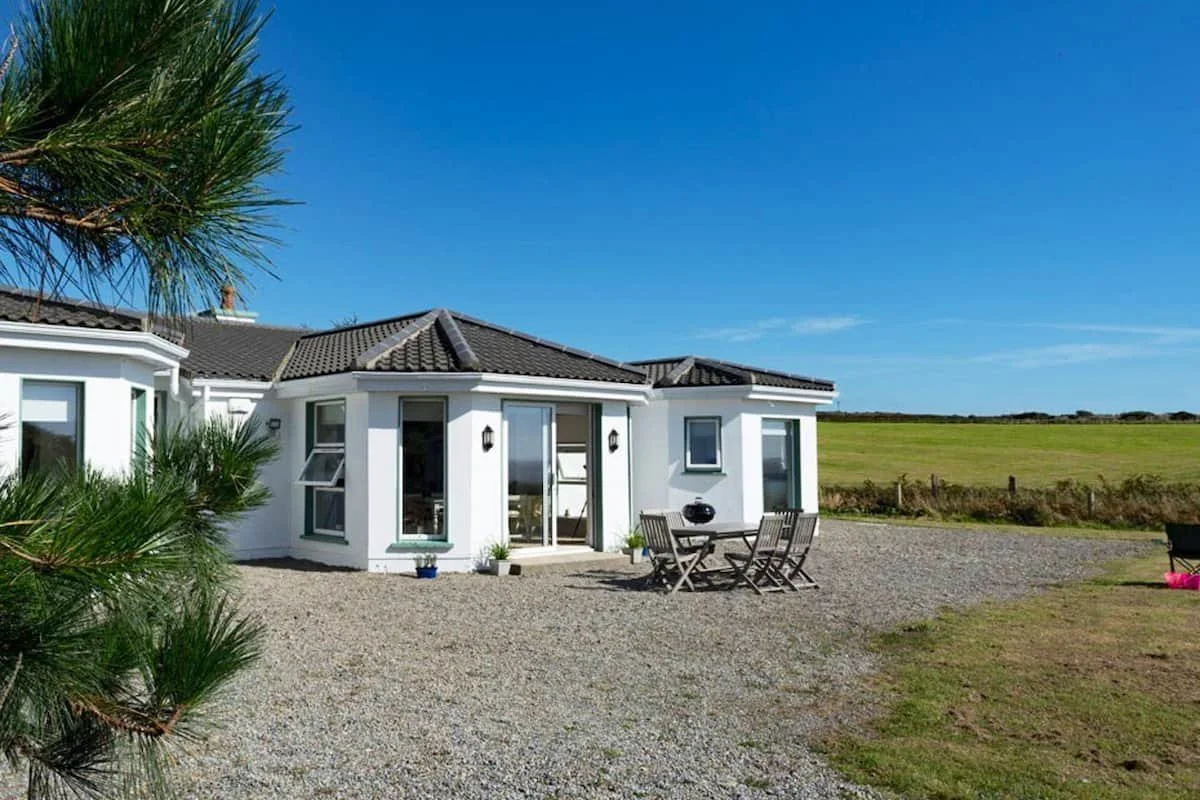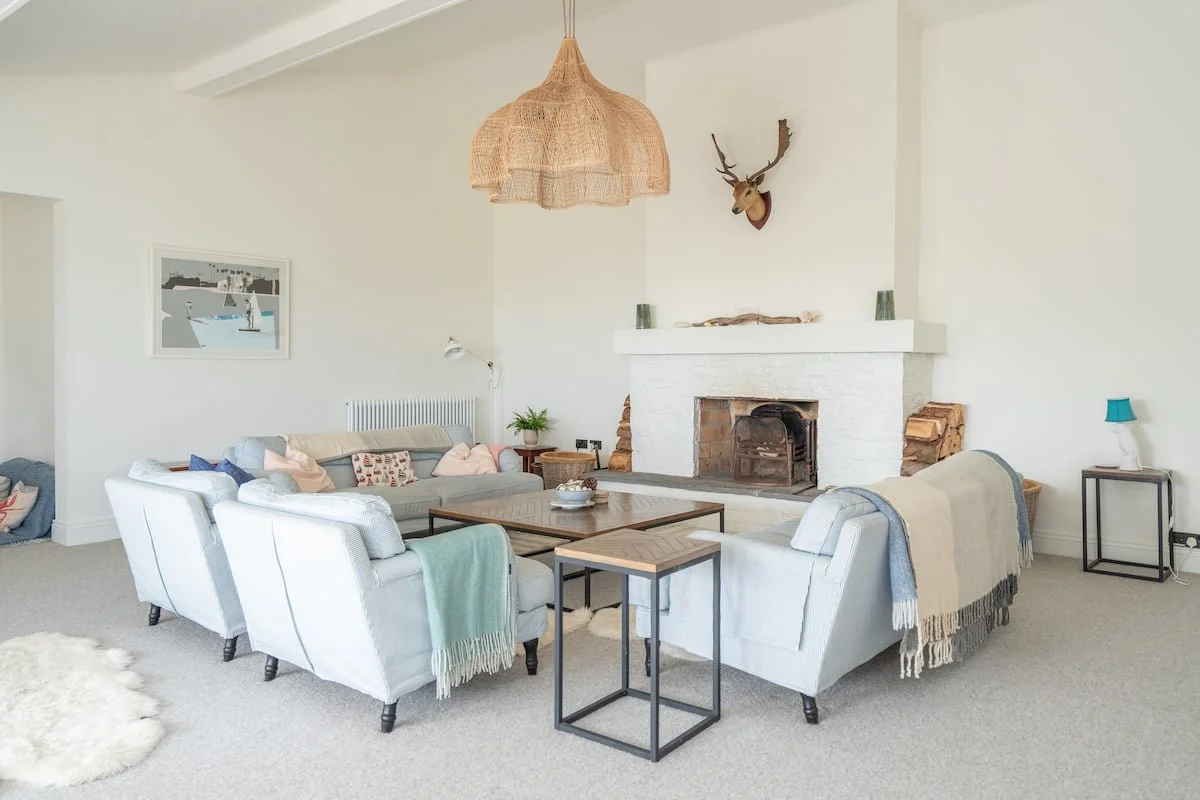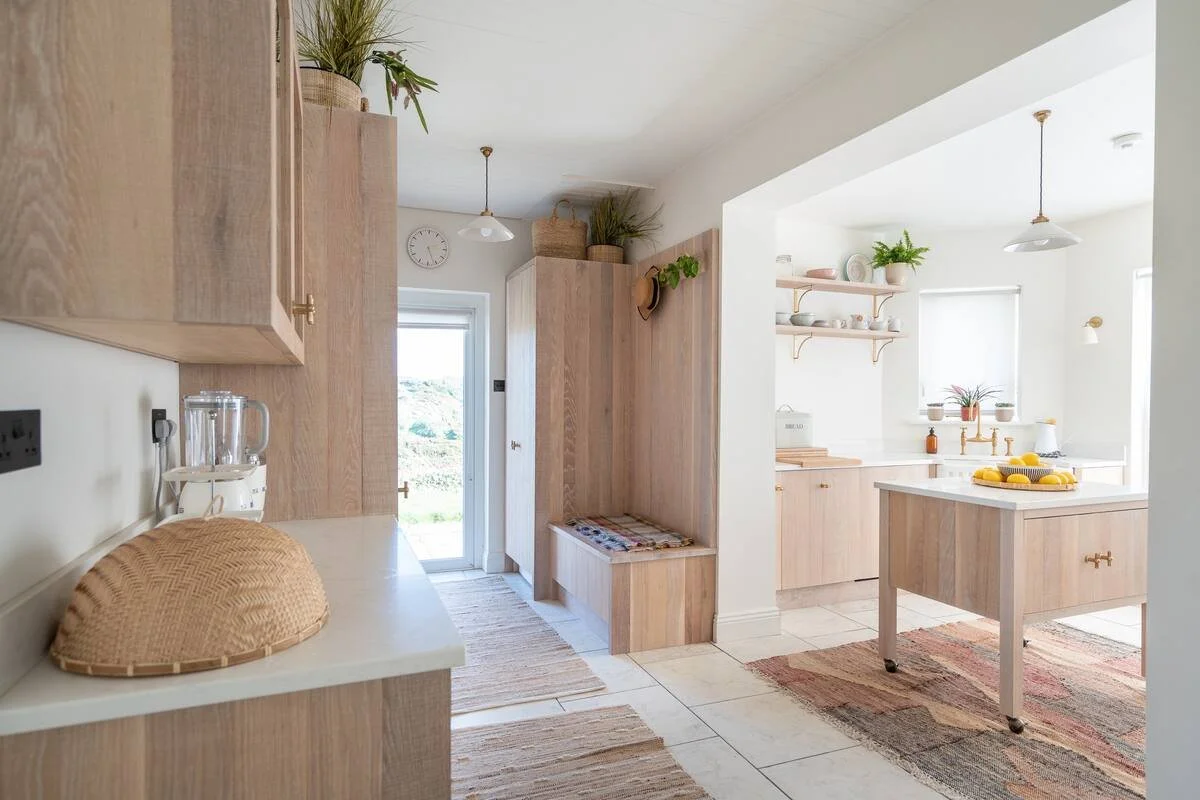Good vibrations
Autumn may be on the horizon, but creating a coastal-inspired interior is a wonderful way to allow summer to linger on. Marie Kelly reveals how a brown, 1970s bungalow in Waterford was transformed into a luxury, seaside-themed retreat.
Clodagh Higginson’s Co Waterford holiday home is a sensitive homage to the sea, sand and copper coastline that surround it. An interiors enthusiast who has revamped several properties, the London-based Waterford woman has navigated beautifully that fine line between pastiche and pathos by curating a scheme that is thoughtful but not try-hard. The four-bedroom, three-bathroom bungalow shows a lightness of touch that only comes with the confidence built up over years of trial and error.
The former journalist, who now runs a communications company in the UK, has always loved interior design. “Since I bought my first flat in London, I’ve devoured interiors titles,” she explains. “That’s my leisure time,” she adds. As a partner in Higginson Strategy, she’s also collaborated with many clients who work in the built environment sector. “One is involved in boutique hotels and I learned a lot about design from them,” she says. All in all, over the years, the 50-year-old appears to have stacked up an encyclopedic design knowledge and soaked up buckets of inspiration, which have been instrumental in helping her tackle what was a “very brown” bungalow untouched since the 1970s when she bought it eight years ago. “It was a big Irish bungalow that had just been added and added to over the years. I think if you’d seen it when we bought it, you’d have wondered why we even bothered to go at it.” she says.
But owning a place in her home county was a powerful draw, while the house’s cliff-top location and sandy cove at the end of the garden easily outweighed the orange pine ceilings, rotting carpets and boarded up fireplace that needed to be tackled inside. Clodagh began by simply whitening out all of the walls and ceilings, as well as the brick fireplace in the living room. “That’s a tip I got from a very successful designer in London,” she explains. “Just make sure you’ve got the correct paint finish,” she advises. An inexpensive way to create the blank canvas she needed for her beach-inspired retreat, it also gave her the financial bandwidth to invest in wool carpets throughout. “I considered wooden floors, but wool is so much nicer underfoot,” she explains, “and in heavy traffic areas, I just threw down some jute rugs.”
It’s the tactile finishes that really bring this country cottage to life. From sheepskin rugs in the living space and rattan armchairs in the dining room to marble vanity units in the bathrooms and a fluted Belfast sink in the kitchen, all of the fixtures, fittings and accessories bring depth and add interest, preventing the scheme from falling into some sort of wishy-washy parody of seaside chic.
For Clodagh, an interiors scheme will stand or fall based on the quality of materials you choose. “Solid wood, rattan, bamboo, 100% cotton or linen will all last longer and age better over time. You don’t have to spend a fortune; you can go into any high-street store and check the label for pure wool or cotton or blends of the two,” she says. “I picked up seat pads for the dining chairs on special offer at Harvey Norman. They’re a beautiful mix of linen and faded cotton-velvet,” says Clodagh. Brassware from Perrin & Rowe and Porter Bathroom brought instant warmth and timeless elegance to the kitchen and bathrooms, while the eggshell blue linen-cotton-blend sofa covers are a perfect example of how time and exposure to the sun have worked their magic on textiles crafted to withstand wear and tear. “I love the faded, beaten-up look they’ve acquired over the years,” says Clodagh.
While her high-low approach to interior design is often referenced as a fun and easy way to upgrade a space, it can be a tricky tightrope to tread, but according to the mother-of-two, if you’ve got your floorplan right – she learned this from Swedish interior designer Beata Heuman’s BBC Maestro course – and you anchor the space with sustainable and durable natural materials, half your job is done. For this reason, the kitchen cabinets, which were handmade by Declan Sexton & Sons, a second-generation, family-run workshop in Waterford, had to be solid wood and were given a lime-wash finish to evoke the texture of driftwood and the colour of white, chalky sand.
The dining room, in contrast, is furnished with an old pine table Clodagh brought over from London and recycled using Annie Sloan paints. “I like a lived-in look,” she says, “and this table has plenty of digs and marks on it.” Once an old, cold-looking conservatory, the dining room is now a white, sun-drenched area that needs no decoration; a semi-circle of full-length windows frames the extraordinary scenery outside. To reinforce the comfortable, well-worn look she coveted, Clodagh invested in two dark brown antique chests of drawers from Waterford-based antiquesireland.ie. They perfectly punctuate the subdued seaside shades in the bedrooms, adding character, individuality and a touch of local history too.
The beach house is an extremely elegant, pared-back home, but it’s not without plenty of personality. The stag’s head above the fireplace was hanging there when Clodagh bought the cottage. “We had to keep it,” she explains. “Somebody told us way back that the site the bungalow is built on once housed Lord Waterford’s hunting lodge and on the back of the stag’s head, you can make out the faded letters of Balmoral, so there’s a story there,” she explains. “In summer, I’ll pop sunglasses on him and a red nose at Christmas time,” she says laughing. “He’s part of the family now.” Quirky prints from Print Club in London, a business run by her brother and sister-in-law, are dotted around the house, mixed in with Irish artists such as Emer Aspel, Rosemary Tritschler and Sorrell Reilly. The hallway is painted in Dulux’s French Grey, which reads as a striking green and gives the space a dynamic energy and dramatic character. “I think you can have a lot of fun in a hallway,” explains Clodagh, “because you don’t linger there too long.”
She’s a big believer in bringing a sense of playfulness to a home and ignoring interiors trends. “Forget about what’s ‘in’ or ‘out’,” she says. “Never buy something because you think you should have it. Only buy it if you love it.” With this in mind, Clodagh does not subscribe to the notion that a beach house-inspired interior must be reserved for seaside escapes and coastal homes only. “You can create this look anywhere because it’s rooted in natural materials, and the palette of blues and beige are easy to work with. Duck-egg blue goes beautifully with mustard and claret if you want to swap in some autumnal shades,” she adds.
The house has an A1 rating and was completely retrofitted with external insulation and solar panels. It also has an EV charger. Offering contemporary conveniences wrapped up in a quintessential late-20th-century, white-washed Irish cottage, Boatstrand Beachhouse is packed with natural materials and tactile home comforts. Clodagh confesses tentatively: “With my notions, I’d love to think the interior would sit comfortably in The Hamptons.” If it’s charm and warmth that Hamptonites are looking for, then this beach house would be right up their street.
This article was originally published in The Journal, August 2025



